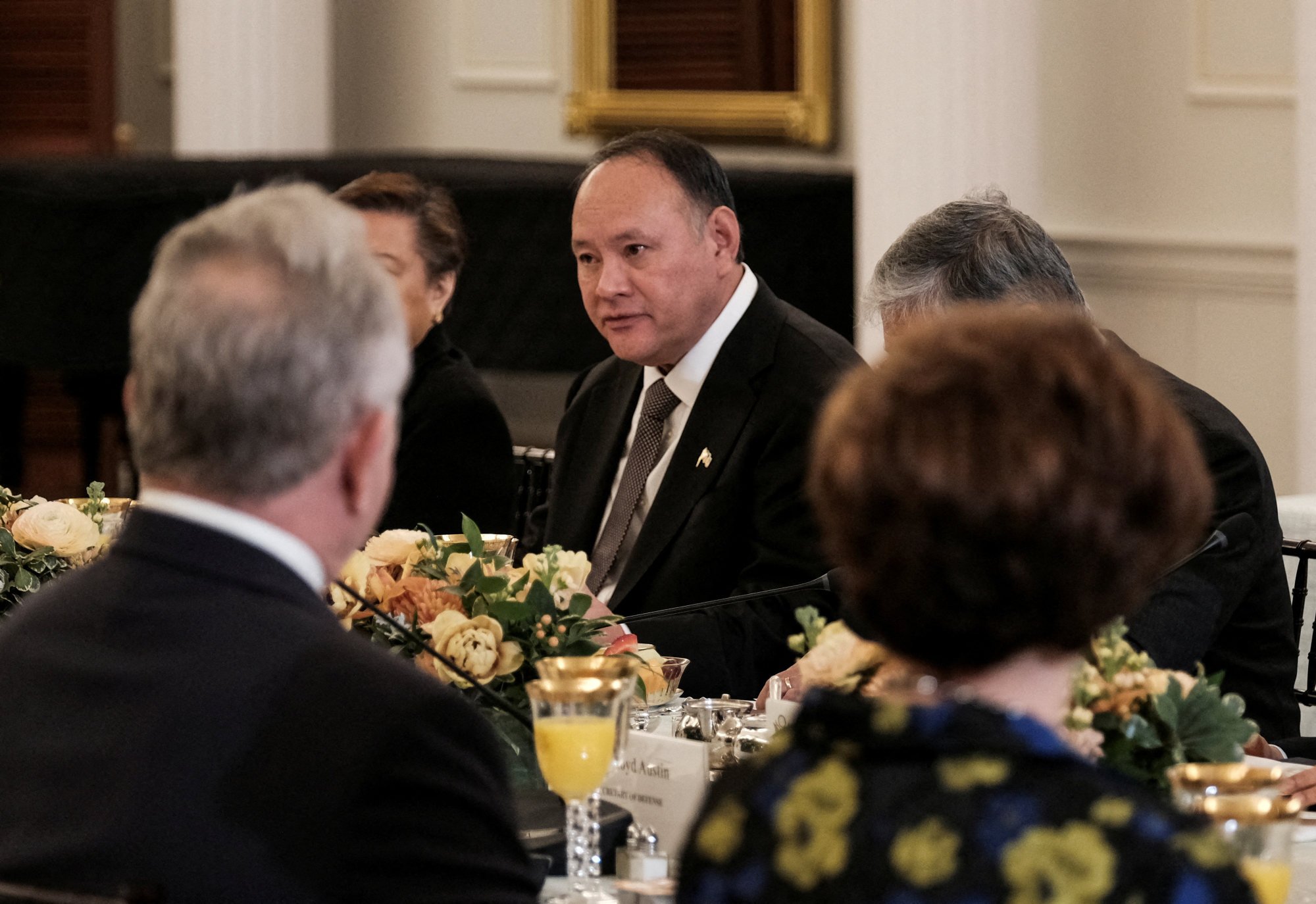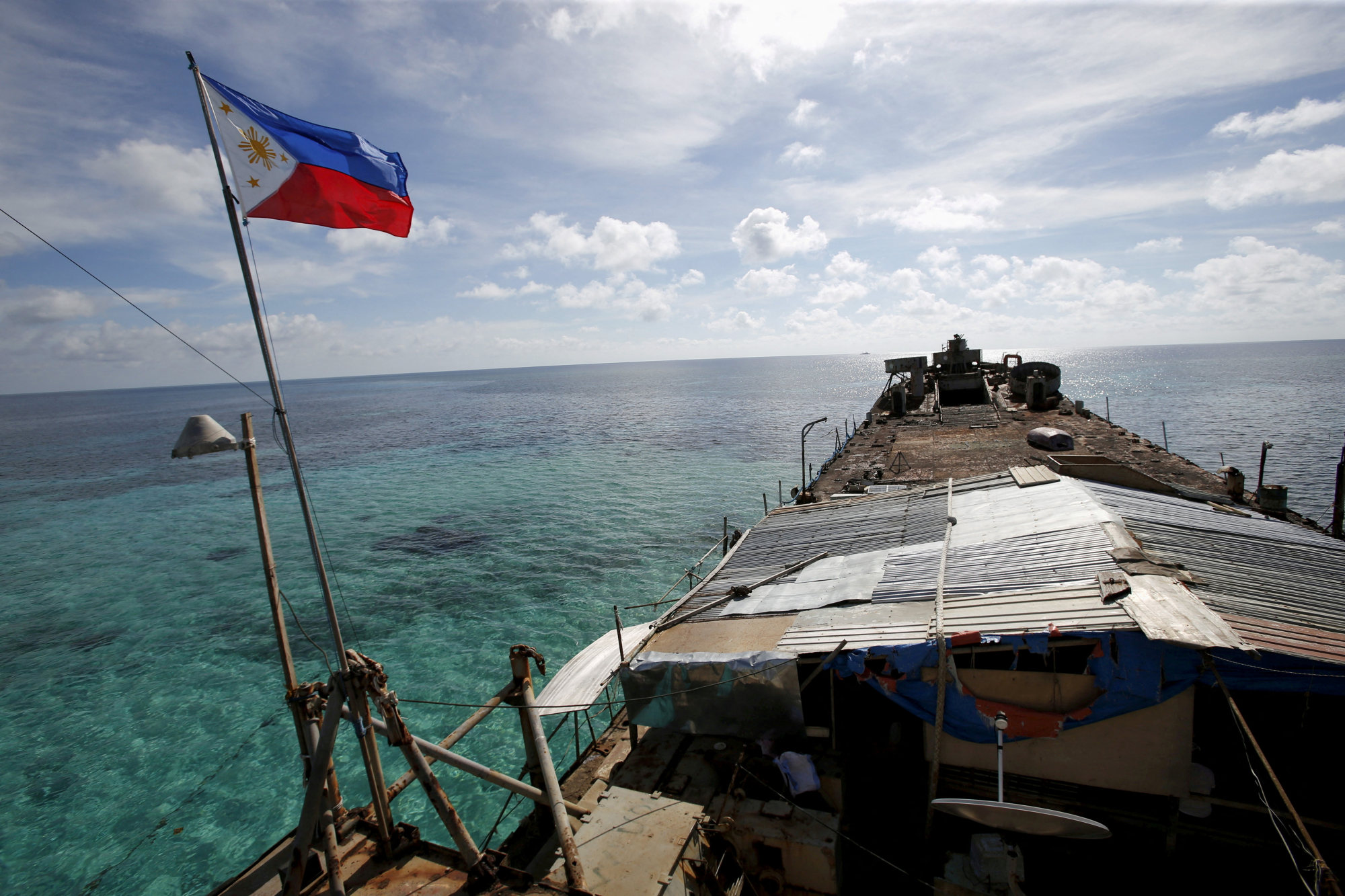South China Sea: Philippines did not agree to ‘new model’ to manage Second Thomas Shoal, officials say
Philippine government officials have denied that they made an agreement with China to follow a “new model” of behaviour to ease tensions over the Second Thomas Shoal, a contested maritime area in the South China Sea that has been the centre of numerous confrontations between the two nations.
Department of National Defence Secretary Gilberto Teodoro Jnr and the president’s national security adviser Eduardo M. Año in separate statements on Sunday denied that the Philippines made the agreement.
They issued statements in response to a post by the Chinese embassy in Manila on its official Facebook page on Saturday that said China and the Philippines earlier this year agreed on a “new model” to manage the Second Thomas Shoal.

China claims more than 80 per cent of the South China Sea as its territory – demarcated on its maps as a nine-dash line, or, more recently, as a 10-dash line.
The Second Thomas Shoal falls within Beijing’s 10-dash line, which encloses its maritime claims in the South China Sea, while the Philippines claims the shoal since it lies within its exclusive economic zone.
The Philippines’ position was upheld as part of a 2016 arbitral ruling at The Hague, which dismissed China’s territorial claims over the South China Sea. China has refused to recognise the judgement, calling it illegal and invalid.
The Philippines also grounded the BRP Sierra Madre, a World War II era navy vessel, to serve as an outpost on the shoal to reinforce its territorial claims.
Manila’s missions to resupply the outpost have been the cause of skirmishes with Chinese vessels, which have used tactics such as high-powered water cannons to disrupt their missions.
Former Philippines president Rodrigo Duterte is alleged to have entered into an unwritten “gentleman’s agreement” with Chinese President Xi Jinping in which he agreed to not send supplies to repair or reinforce the BRP Sierra Madre, as this would be considered akin to creating new infrastructure and a violation of the status quo situation in the South China Sea.
The administration of Duterte’s successor, President Ferdinand Marcos Jnr, has denied any knowledge of such an agreement and the legislature has vowed to investigate its existence.
However, the Chinese embassy’s Facebook post said the Marcos Jnr government had agreed to a “new model” for conduct regarding the shoal and subsequently reneged on it.
The post, which was not published on the embassy’s official website, says the Chinese embassy met an official after Marcos Jnr took office, and made a new agreement with the government’s backing.
The post says Chinese envoy Huang Xilian on July 5 last year visited Marcos Jnr’s new defence chief Teodoro Jnr, and briefed him on the “gentleman’s agreement”.
Teodoro Jnr strongly rejected this version of events in his Sunday denial statement.

Local Philippine media reported that Huang met AFP Wescom chief vice-admiral Alberto Carlos on July 21, where Carlos stressed the need for a “diplomatic approach” in resolving competing claims in the West Philippine Sea – Manila’s term for the section of the South China Sea that defines its maritime territory and includes its exclusive economic zone.
The Philippines’ National Security Council will leave it to the military to decide whether to investigate Carlos over the matter, said Jonathan Malaya, the council’s assistant director general, on Monday.
Antonio Carpio, a retired Supreme Court associate justice and an analyst of international law, expressed doubt that the “unauthorised Philippine government personnel realised that they were negotiating with a foreign government and committing the Philippine’s government”.
“Only the Department of Foreign Affairs (DFA) is authorised to negotiate and conclude agreements with foreign states,” he said.
“The Chinese embassy cannot just negotiate directly with Philippine agencies without going through the DFA. The Chinese embassy should follow protocol and negotiate only with the DFA.”


